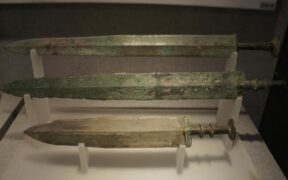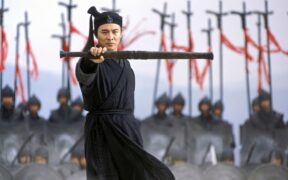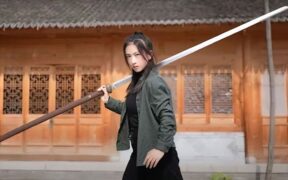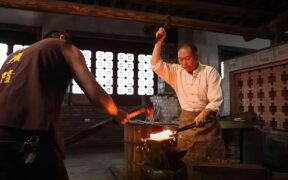Our content features commercial links to our products, committed to transparent, unbiased, and informed editorial recommendations. Learn More
Benefits of Chinese Sword With Rings: From Legend to Reality
NO AI USED This Article has been written and edited by our team with no help of the AI
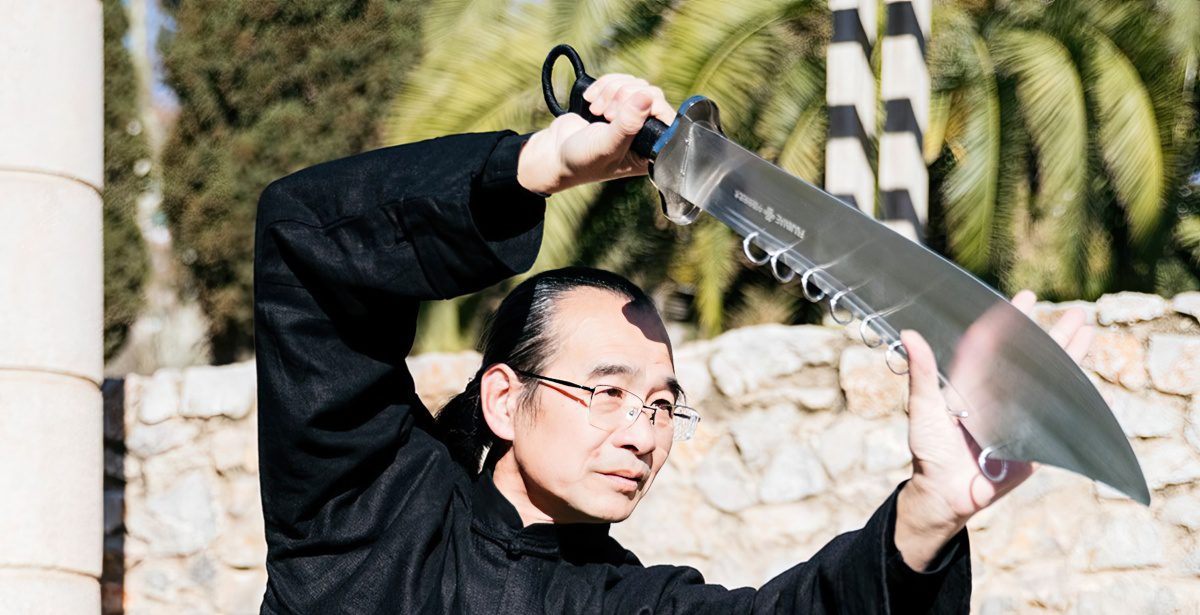
As many different cultures and regions have their trademark swords, like the samurai Katana in Japan or the cross guard-styled Longsword from Europe, the most popular sword throughout China is the Chinese sword with rings. Nine sets of rings are added on the backside of a blade, usually Dao broadswords.
These nine rings represent cultural art pieces and a martial arts element that some believe makes the blade stronger and more lethal than a regular blade. In this article, we will discuss the Chinese sword with rings. We will reveal the most popular Chinese swords that have them, go over the many possible benefits, and conclude with how they are created.
Jiu Huan Dao
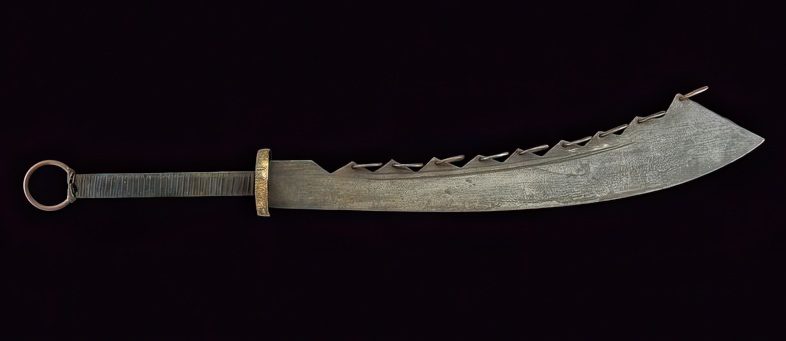
In contemporary media, the Jiu Huan Dao ranks as the most frequently shown Chinese broadsword. It is a DaDao sword, but it’s called the Nine Ring Great Broadsword because of the nine rings down the back of the blade and is most often presented as a massive weapon.
The Jiuhuandao is a single-edged sword with a recurved double-edged blade tip for thrusting, but it is a weapon best suited for slicing and cutting due to its heft and flexibility. Some who believe this theory assert that the energy expended by the swinging blade is temporarily stored in the loose rings and released when the sword makes contact with its intended target.
Moreover, these rings were likely utilized to keep the blade from slipping off of adversary blades and to produce a sound to disrupt the opponent. The Jiuhuandao is an intimidating weapon around 30 to 37 inches (78 to 95 cm) and came into being somewhere during the Qing Dynasty, quickly becoming the trademark Chinese sword with rings.
Benefits of Rings on the Chinese Sword

The rings are the biggest attribute and characteristic of a Chinese sword with rings. But adding them to a blade wasn’t an easy task, and although it isn’t necessarily clear why it was done, they have several benefits. Some of these may be highly controversial and untrue, but the rings played a vital role in the high status these swords now have.
Here we will present you with famous historical and modern theories about their benefits and explain how they might be useful on a regular type of blade.
Intimidation
The unique look of the sword and its unorthodox blade could easily scare off local common folk or even a veteran sword user. The sheer mysterious element of it projects incredible strength for the wielder and could easily serve as a tool of shock and intimidation to anyone that comes before it. That is why some argue that because of this menacing position, it would make a great Chinese executioner sword.
Sound
The sound is the biggest attribute of the nine rings on a Chinese sword with rings, and this, along with its intimidation, adds to the fear it creates in people. It is said that the sound of the rings can destabilize an enemy, causing them to lose focus and their ability to defend themselves from incoming strikes.
Trapping Enemies’ Blades
The theory of the nine rings across the backbone of the Chinese sword is that it could stop an incoming sword and its thinner blade, but this may not be the case. We believe it could be used as a defensive tool if the sharp edge goes dull and possibly cause an incoming blade to get stuck in its rings.
Increased Lethality
The metal rings move back and forth as this sword’s wielder moves it in a range of motion. When the sword is used for an attack, the rings will move forward with inertia, and the center of gravity will shift toward the blade’s tip. This belief makes some people think this type of blade is deadlier than the regular Dadao, although it isn’t the case.
Not Getting Stuck
Using a type of sword on armored or even unarmored opponents might lead to its blade getting stuck in bone or metal. By adding the nine rings on the blade, the steel wouldn’t penetrate as deep, and the blade would be ready to use for yet another strike.
Mythology & Chinese Symbol
In Chinese culture, the number nine is considered fortunate since it is associated with everlasting health and harmony. It was also a sign of the Emperor, on whose robes nine dragons were frequently embroidered as a decorative motif. In addition, according to traditional Chinese folklore, the lucky and mythological dragon, the biggest Chinese symbol, gives birth to nine baby dragons. Some even say that the rings ward off evil spirits.
Never Stabbing in the Back
The rings are there for a sound reason so that whoever is practicing the art of Wushu, Kung Fu, or Chinese martial arts would never go behind their training and stab an unsuspecting person in the back. This way, with the rings, a proper duel might begin, and there wouldn’t be any type of cowardice in play.
Ornamental
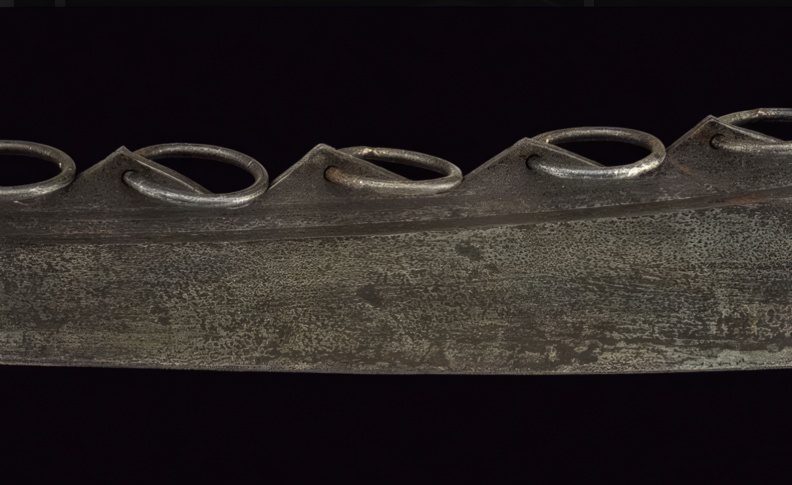
What can be said for certain is that the rings add to the Chinese swords, making them highly unique and truly one-of-a-kind. They are ornamental pieces that make the blade look attractive to the eye when carrying it on a belt. In martial arts, and especially in Chinese sword dances, these nine rings are a spectacular sight because they make everything much more interesting thanks to their looks and sound.
Weight Distribution
Some believe that the nine rings, made out of metal and distributed throughout the blade, help massively with the sword’s weight distribution. It’s believed that the logic behind the blade’s weight and balance is at the end of the blade or the tip itself.
By adding these metal rings, the weight is evenly distributed throughout the sword and is easier to maneuver and balance control. However, this is controversial and may not be the case. The rings add weight to the blade, resulting in a harder and more powerful strike. This extra weight helps with impact and outweighs the enemies’ blades.
Construction of the Chinese Sword with Rings
Only the most skilled swordsmiths would be able to construct Chinese swords with rings since it is a challenging process. It would require significant training and experience, both of which are difficult to acquire even with today’s technology.
Even if, according to our standards and experiences, we believe that these rings are only for decorative, religious, cultural, and ceremonial purposes and do not help in combat, they are still a one-of-a-kind and masterful craft of the sword.
